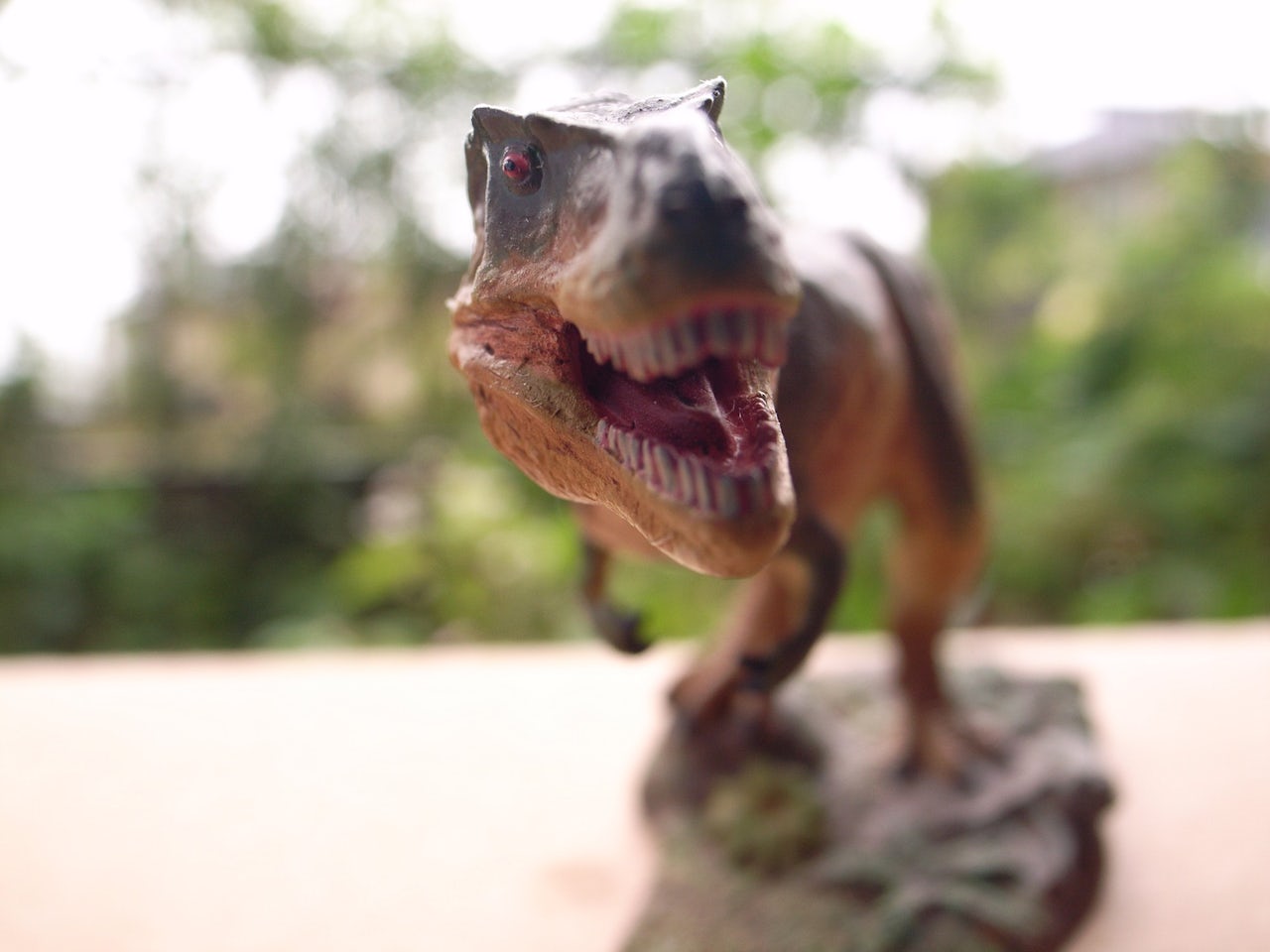You might have seen headlines rumbling around claiming that the Tyrannosaurus rex — a dinosaur typically associated with carnage thanks in part to bombastic appearances in the Jurassic Park franchise — was a “sensitive lover.” While that takes certain liberties with the original scientific article, it’s not as far from the truth as it might seem.
The Scientific Reports paper, published on March 30, accomplishes a number of things within a short span. It names a new tyrannosaur species, Daspletosaurus horneri, after Dr. Jack Horner, the retired paleontology curator of the Museum of the Rockies and consultant on the Jurassic Park films; it places the newly named species within the tyrannosaur family tree; it offers a hypothesis of nonbranching speciation for the creature, suggesting D. horneri evolved directly from D. torosus; and it makes a series of comparisons to crocodylians — crocodiles and the like — in order to explain certain facial structures.
It’s the last part that’s most exciting. “We propose a hypothesis regarding the physical appearance of the tyrannosaur face, based on D. horneri and what is seen in other tyrannosaurs, where the texture of the facial bones provides direct evidence of what type of skin covered it,” says Thomas Carr, one of the article’s authors and director of the Carthage Institute of Paleontology. The group specifically “identified textures that correspond to flat scales, armor-like skin, and horn.”
Because of the hypothesized flat scales, they go one step further to suggest that tyrannosaurs would have had similar tactile sensitivity to crocodylians. “In crocodylians those scales have specialized receptors called ISOs (integumentary sensory organs) that give their faces a sensitivity comparable to human fingertips,” Carr explains. If flat scales and ISOs are correlated, he further elaborated, then tyrannosaurs would have had them as well as similarly corresponding sensitivity.
Thus the “sensitive lover” angle that’s become so prominent, which seems to come from a sentence in the paper suggesting “tyrannosaurids might have rubbed their sensitive faces together as a vital part of pre-copulatory play.” While this might seem a bit hyperbolic considering that media commonly has trouble translating scientific research into digestible chunks, the “pre-copulatory play" aspect that folks have latched onto isn’t just a farfetched interpretation according to Carr.
“If we use crocodylians as a model for tyrannosaurs, we see that their sensitive snouts were integrated into every aspect of their biology,” Carr admits, “including hunting, social interaction, mating behavior, nesting, and care for hatchlings. If tyrannosaurs had the same hypersensitivity, then there is no reason to think they were any different behaviorally from crocs, which includes the social interactions.”
In other words, tyrannosaurs might have rubbed faces before banging — just like crocodiles.
But why is it we’re seemingly always discovering new things about dinosaurs, including T. rex and other tyrannosaurs, that upsets the previously understood nature of the creatures? The simple answer, according to Carr, is that new fossils are found at high rate and there are many unanswered questions that can be answered in a straightforward manner given the right fossils. It also has to do with which scientists are focusing on which aspects of which dinosaurs.
Why are we always discovering new things about dinosaurs that upsets the previous understanding?
“The landscape is not uniform,” explains Carr. “Scientists have different approaches, ask different questions, and study different lineages for different objectives, which produces mountains of new data. That adds up to a rich and burgeoning field of science.”
The next step to proving the whole “sensitive lover” thing would be finding a fossil of a tyrannosaur with the facial area in question preserved — a tyrannosaur mummy of sorts. A large number of such fossil skeletons with skin impressions have been found previously, though only small impressions of tyrannosaur skin have been found so far. But Carr remains hopeful, and believes it to be just a matter of time.
“In and of itself, we have provided a null hypothesis [about facial sensitivity] for our colleagues to test where previously there wasn't one,” Carr notes, “which is a valuable starting point that permits further work to proceed. In the meantime, I hope that some lucky explorer will find the fossil of a tyrannosaur ‘mummy’ that preserves facial integument — in one stroke we'd know the truth!”

